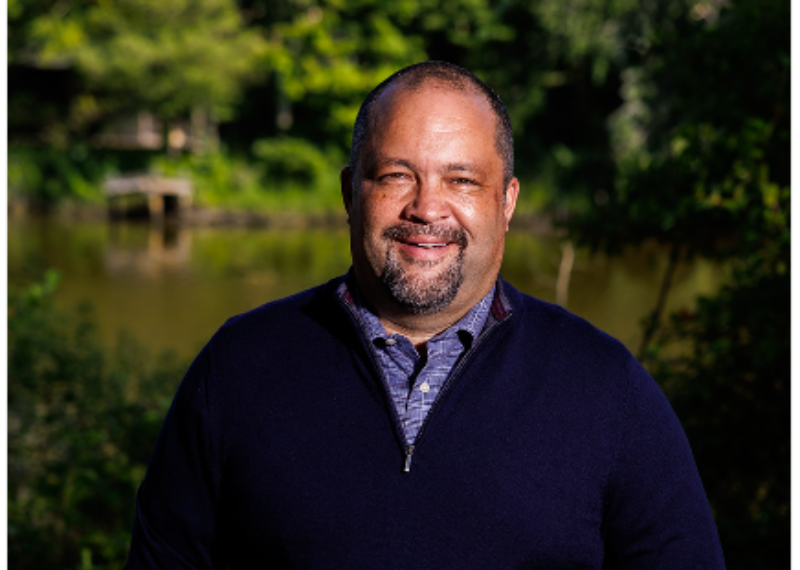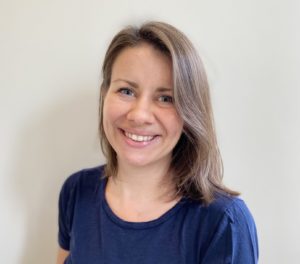Ben Jealous has spent much of his career fighting for voting rights and prison reform. Now, as he takes the helm of the Sierra Club, he’s thinking about other ways to fight injustice. That means pushing back against freeways that cut through neighborhoods, demanding accountability when a train derailment spills toxic chemicals into a community, and continuing the organization’s work to shutter coal plants.
Jealous, who led the National Association for the Advancement of Colored People (NAACP) from 2008 to 2013, is the first person of color to lead the 130-year-old Sierra Club. He joins the organization after a tumultuous couple of years, partly over the legacy of its founder, John Muir, who espoused racist views against Black and Indigenous Americans, and allegations of workplace discrimination and misconduct.
“The Sierra Club has had a real reckoning,” Jealous said. “These sorts of reckonings are necessary and healthy and not easy, but it’s a trademark of an organization that’s accountable and prepared to evolve.”
Jealous describes himself as a “lifelong environmentalist.” He grew up in California, where his childhood was marked by visits to the Sierra Nevada and the Redwoods. He said the move to the Sierra Club marks a continuation of—and not a pivot from—his civil rights work. This conversation has been edited for clarity.
Can you talk about the transition from civil rights to environmental work? What’s the throughline from the NAACP and the Sierra Club?
I’m [at the Sierra Club] because I see great urgency for us to build a coalition that’s big enough to win fast enough for us to preserve this planet. I’m also focused on ensuring that this old, proud, membership-based organization flourishes. That’s what’s common between my work at the NAACP and [here].
Whenever you take over an old, mass-membership-based organization, you have to ask yourself: What made us a rocket ship in the first place?
The NAACP, in the beginning, focused on outrageous cases of individuals being abused by the police, educational systems, and hospitals. We elevated cases like the Scottsboro boys.
When I took over at the NAACP, we went back to individual casework, championing individual cases of injustice: Troy Davis, Trayvon Martin, the Scott sisters. Why? Because the NAACP figured out in its earliest decades that the biggest gateway to a great cause is typically a horrendous injustice. We elevated cases like the Scottsboro boys [and later] Troy Davis, Trayvon Martin, the Scott sisters. People connect first with stories about people before they commit to advancing a particular policy.
At the Sierra Club, that means elevating our local fights—for land preservation, for more parks, for communities that have been poisoned—and having national leaders aggressively back up local chapters and local allies in a way that’s similar to what people expect from the civil rights movement.
What do you think makes the Sierra Club powerful?
The sheer magnitude of this organization. Our Beyond Coal campaign has shut down 297 coal-fired power plants in the United States over the last 12 years. That is by far the most impactful campaign to curb carbon emissions in the United States.
It’s also our approach to outings. From the beginning, we brought people into the most beautiful inner sanctums of the wilderness. Places [where] you feel your soul transformed by sheer grandeur and beauty. These cathedrals of nature, without any preaching, shift people from being curious conservationists to impassioned preservationists.
Then we double down on the fights that flow from that commitment to preserving the most beautiful and pristine wild places.
You launched NAACP’s climate justice program in 2008. Has the way you thought about environmental justice changed since then?
I started my career [as an investigative reporter at Mississippi’s Jackson Advocate] covering the cancer clusters from chemical spills and pulp mills.
When we launched the climate justice program at NAACP, one thing I started to think about was the way in which old colonial patterns—who lives on what land—set up low-income communities and communities of color for increased exposure to the ravages of climate change-related disasters.
I also don’t think there’s enough conversation about vulnerable, low-income white communities. If we’re going to build a coalition big enough to win, we’ve got to show the full face of the folks who have been and will be displaced by climate-related disasters. Now, we have a shorthand assumption that it’s just going to be Black people, Brown people, and Native Americans. But at the end of the day, America has 8 million Black folks in poverty and 16 million white folks in poverty, and a lot of your risk for being impacted by climate-related disasters, one way or another ties directly to poverty.
You’ve recently embarked on a listening tour where you met with volunteers, chapter leaders, donors, and close community partners across the country. What did you hear and learn?
There is a real urgency to get even greater visibility to our local fights—fights to preserve wild places and fights to stop the poisoning of entire communities.
On the Gulf Coast, there is a real frontline, environmental justice urgency. Africatown, in Mobile, Ala., is a community originally defined by the people who were cargo on the last slave ship to the United States. It is surrounded by multiple chemical plants and oil and gas refineries. In Houston, we visited old Black communities in the Fifth Ward that have been similarly poisoned. In Gulfport, Miss., there’s another community that’s wrestling with similar issues. You start to see a pattern.
In Washington State, we’re involved in battles to remove old dams that have transformed [rivers], decimated the salmon population and left entire Native American tribes in an existential crisis.
When you really listen to people, what you hear is fear about the future of our planet, frustration with the state of our economy—persistent downward mobility and poverty—and yet, profound hope that we still have time to get both right. And a recognition that all of it is connected.
You’ve talked about taking a wider view of what it means to be an environmentalist, saying, “We don’t get to save the planet and not take on the ravages of poverty.” Can you expand on that?
The maintenance of mass poverty creates the political context in which the destruction of the environment and wild places is relegated permanently to second position. In other words, if there’s a social injustice that’s destroying the planet, it’s poverty. Racism helps maintain it.
If you ask yourself, “Why would the voters of West Virginia keep voting for politicians that blow up off mountaintops, dump them into rivers, and in the process destroy everything that the people of West Virginia love about their state?” It’s because they need the job of extracting coal.
Last year the US passed the single-largest piece of climate legislation in our history. What’s the Sierra Club’s role in helping the Inflation Reduction Act and other climate commitments live up to their promise?
We have the resources to shift our economy from its historical reliance on destroying people and places to one in which we create more jobs—and good jobs—[by] building industries that help sustain the planet.
The good news is that, as activists these days, we get to show up with carrots and not just sticks. We are preparing to deploy dozens of ambassadors for the IRA across the country who will train mayors, city councils, county executives, and even governors and state legislatures about what money is available, where to find it, how to access it, and then how to deploy it in ways that will meet our nation’s climate goals and build their local economies.
In your new book, you write about “unexpected” conservative allies in efforts to shrink prison populations and expand voting rights for the formerly incarcerated. Where do you see opportunities for bipartisan cooperation on climate and environmental justice?
I see opportunities [in] the production and deployment of solar panels across the country. Everybody understands the need to remove unnecessary red tape. We need to be in and lead those conversations if we’re going to make sure that NEPA [National Environmental Policy Act] standards don’t get disregarded or gutted.
I also see great hope in protecting wild places. Congressman Mike Simpson, Republican of Idaho, has been a longtime ally in our efforts to remove the four dams on the Snake River in order to restore the salmon population.
[Forging alliances takes] the hard work of listening, really developing relationships and understanding where people’s passions and interests align with ours. Our superpower is that we’re everywhere. We have 64 chapters and hundreds of groups. That makes us local to every congressional district, and we can organize in any of them.
That’s what we’ll be focused on. The implementation of the Inflation Reduction Act, the continuation of Beyond Coal and the next generation of ambitions related to how we generate and distribute power. It’s getting back to the movement-building activities that have always grown and nurtured this organization and the next generation of environmental activists.
Nexus Media News is an editorially independent, nonprofit news service covering climate change. Follow us @NexusMediaNews.


